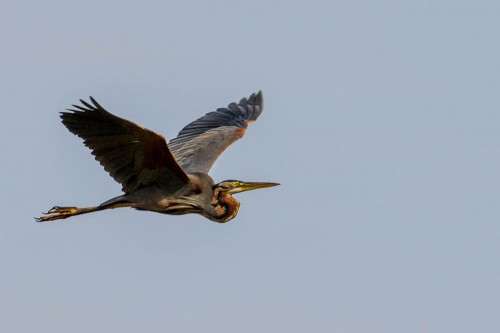
I have covered the topic of cropping in my earlier blog here. Today I want to talk on Crop factor. The film SLR camera manufacturers when shifting to digital, found it was quite expensive to produce sensor which was the size of the 35 mm film. What they resorted was to produce a smaller sensor than the 35mm film size. Advanced Photo System (APS) was at that a film format which was 24mm wide and they adapted that name and called it APS-C sensors. C stands for “Classic” format of APS film which was 25.1 × 16.7 mm with an aspect ratio of 3:2 Most DSLRs on the market have nominally APS-C-sized image sensors, smaller than the standard 36 × 24 mm (35 mm) film frame. For example, many Canon DSLRs use an APS-C sensor that measures 22.2 mm × 14.8 mm. The result is that the image sensor captures image data from a smaller area than a 35 mm film SLR camera would, effectively cropping out the corners and sides that would be captured by the 36 mm × 24 mm full-size film frame.

The terms crop factor and focal length multiplier is used to help 35 mm film format SLR photographers understand how their existing ranges of lenses would perform on these APS-C cameras which had sensors smaller than the 35 mm film format, but often utilized existing 35 mm film format SLR lens mounts. Using an focal length multiplier of 1.6, for example, a photographer might say that a 50 mm lens on his DSLR “acts like” its focal length has been multiplied by 1.6, by which he means that it has the same field of view as a 80 mm lens on the film camera that he is more familiar with. Of course, the actual focal length of a photographic lens is fixed by its optical construction, and does not change with the format of the sensor that is put behind it.

For most DSLR cameras, crop factor varies from 1.3–2.0.
- 2.0X — Four Thirds system
- 1.7X — Sigma DP1, Sigma DP2, Sigma SD15, Sigma SD14, Sigma SD10, Sigma SD9, Canon EOS DCS 3
- 1.6X — Canon EOS 7D, 500D (T1i/X3), 550D (T2i/X4), 600D (T3i/X5), 60D, 50D, 1000D, 1100D, 40D, 400D, 30D, 450D, 20Da, 350D, 20D, 300D, 10D, D60, D30
- 1.54X — Pentax K20D, Pentax K-7, Pentax K-5
- 1.53X — Pentax *istD, Pentax *istDs, Pentax *istDs2, Pentax *istDL, Pentax *istDL2, Pentax K100D, Pentax K100D Super, Pentax K10D, Pentax K200D
- 1.52X — Sigma SD1, Sigma SD1 Merrill, Sigma DP1 Merrill, Sigma DP2 Merrill, all Nikon DSLR cameras except the full-frame D3, D3s, D3x, D4, D700, and D800; all Fuji, Sony (except for the full-frame Alpha 850, Alpha 900), newer Pentax DSLRs (K-m, K-x and K-r), and Konica Minolta DSLR cameras.
- 1.3X — Canon EOS-1D Mark IV, 1D Mark III, 1D Mark II (and Mark II N), Kodak DCS 460, DCS 560, DCS 660, DCS 760, Leica M8, M8.2

In a cropped camera like Canon EOS 7D for example a 28 mm lens delivers a moderately wide-angle field of view on a 35 mm format full-frame camera, but on a camera with a 1.6 crop factor, an image made with the same lens will have the same field of view that a full-frame camera would make with a 45 mm lens (28 × 1.6 = 44.8). This narrowing of the field of view is a disadvantage to photographers when a wide field of view is desired. Ultra-wide lens designs become merely wide; wide-angle lenses become ‘normal’. However, the crop factor can be an advantage to photographers when a narrow field of view is desired. It allows photographers with long-focal-length lenses to fill the frame more easily when the subject is far away. A 300 mm lens on a camera with a 1.6 crop factor delivers images with the same field of view that a 35 mm film format camera would require a 480 mm long focus lens to capture.

Compared to the full-frame format (size equivalent to 35mm film), APS-C sensors offer some advantages and disadvantages. SLRs with APS-C sensors are considerably cheaper than full-frame cameras. They are also lighter and smaller. Apart from these differences, there are two other important factors. The first is image quality. Theoretically, a larger sensor produces a better image, i.e. one with more detail and less noise. In practice, the difference may not be obvious and may depend on the use of a high quality lens and on the photographer’s skill. The other difference is the smaller field of view. Let me take my Canon EOS 5D mark III and Canon EOS 7D and compare the result. 5D mark III has full frame sensor (size equivalent to 35mm film) and 7D has 1.6 crop factor(size 1.6 times smaller than 35mm film). The smaller APS-C sensor of 7D effectively minimizes the field of view by about 1.6, so that a 300mm lens has the same field of view as a 450mm lens on a 35mm. It is important to note that there is no magnification benefit, only a smaller field of view.

Let us try another experiment. If I use crop on my 5D mark III picture by a factor of 1.6 what will be the resultant effect? Is it better than 7D or bad? The only way we can test is to find out the total amount of pixels the resultant picture produces. 5D Mark III produces an image 5760 x 3840 = 22118400 or 22 Mega Pixels. If I crop that by 1.6, I get 3600 x 2400 = 8640000 or 8 Mega pixel image. This is almost the size I used to get on my older Canon EOS 40D camera. 7D on the other hand even with its smaller sensor produces 5184 x 3456 = 17915904 or 18 mega pixel photo, so effectively the cropped sensor of 7D is able to produce larger mega pixel photo than 5D mark III. I want to clarify here that I am in no way telling more mega pixel is better. In fact if canon produce a full frame sensor out of 7D’s pixel pitch, it will be around 18 X 1.6 X 1.6 = 46 mega pixels. Please also note that as they cram more and more mega pixels into a sensor the quality of the photo starts dropping and noise increases after a certain amount of mega pixels. We are still not sure what that figure is. But these calculation prove us that 7D is a better camera for a bird photographer as it produces larger mega pixel photo than cropping equivalent amount on 5D mark III. You will be able to get a better crop of the bird on 7D than on 5D mark III except the quality of picture from 5D mark III will be far superior than that from that from 7D.
I thank my good friend Shiva Shankar for lending me his 7D to test while he was testing my 5D Mark III for bird photography. He was also the inspiration behind this article.

Very clearly explained Sir! Thank you for taking time to clear this rather confusing concept 🙂
Lovely post Dr.
You have explained well about how more pixels are packed in a 7D photo compared to a 1.6 cropped 5D MarkIII photo both using same lens at same focal length. You also have said that more pixels may not be better beyond a threshold and that threshold is unknown.
Not sure about how you arrived at this conclusion though “… except the quality of picture from 5D mark III will be far superior than that from that from 7D”. What parameters have you used to reach this conclusion?
I am keen on buying a 5D MarkIII, hence, the interest in knowing.
Dear Diptanshu Parui,
Due to constraints of space I could not go through merits and demerits of mega Pixels. 7D for its size (1.6 times smaller than 5D mark III) packs 18 mega pixel. If you crop 5D mark III to similar size as 7D you will get only 8 mega pixel. If you have more mega pixel per inch, no doubt you will get larger picture, but it also increases noise in the picture especially in higher ISO. if you see reviews of 7D & 5D mark III you will notice, 5D scores very high in quality of photo department as well as low light performance. Read my review of 5D Mark III here and then decide on your purchase.
Thank You Arjun for your kind words.
nicely written article as always.I have a small doubt. Ultra wide angle lenses should work to their full potential on a full frame camera as there is no crop factor in them . When I saw Tokina 12-24mm lens they say it works with APS-C sized sensor cameras only which means to say it is not suitable for full frame camera. Is there a work around available for using such lenses on Full frame camera?
Unfortunately APS-C specific lenses are only can be used on APS-C cameras. They cannot be used on full frame sensor cameras. You can add extension tube in between the lens and the body and use it, but will cause a very bad circular vignetting (as though you are looking through a tube) as they cover only center part of your sensor. You need to buy full frame lenses for full frame sensors.
I wish camera manufacturers stop the megapixel race and work on getting us better ISO performance , better focusing systems.
Dear Krish,
Thanks for the excellent review, appreciate your efforts and patience and importantly your gesture to help all others out there on the field. I am planning to buy the Canon 5D Mark III very soon and this review certainly helped me accelerate my decision towards this. However I am confused between the Nikon D800e. So if you could please help me. Also after reading your review on the Tamron SP 150-600mm f/5-6.3 Di VC USD and almost sold out on it now, thanks to you. I was considering the Caagain Tamron or Canon. And lastly whether a 1.4x TC is good or 2.x as heard 2.x affects the AF and picture quality and at times even stops the AF. Also is a 1.4x TC available for the Tamron lens. Will greatly appreciate your precious feedback and advice before I put my hard earned $$$ at stake. I am not a professional photographer who would earn by selling this pics. Am just a hobbyist wild life / birder. Thanks so muchnon 100-400mm f/2.8 or f4-5.6. But am confused
Nikon 800E is as good as 5D Mark 3. With Tamron 150-600 1.4x TC works fine. 2X TC will not work. Remember Canon / Nikon TC’s won’t work. Only Tamron/Sigma/Kenko brands work. You will loose a bit of sharpness as well focusing speed but will gain focal length of 210-840mm at cost of 1 stop aperture loss. Compared to 100-400 this will give you a better reach in a budget. If you have money to spend then spending on f/2.8 lenses is worth, else as hobbyist, this lens will be lighter to hold as well as lighter on the pocket.